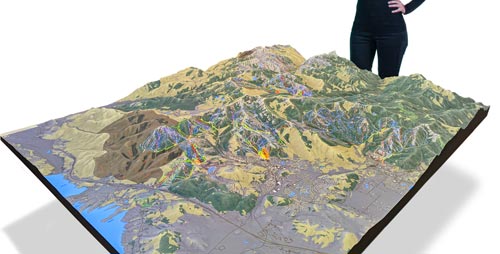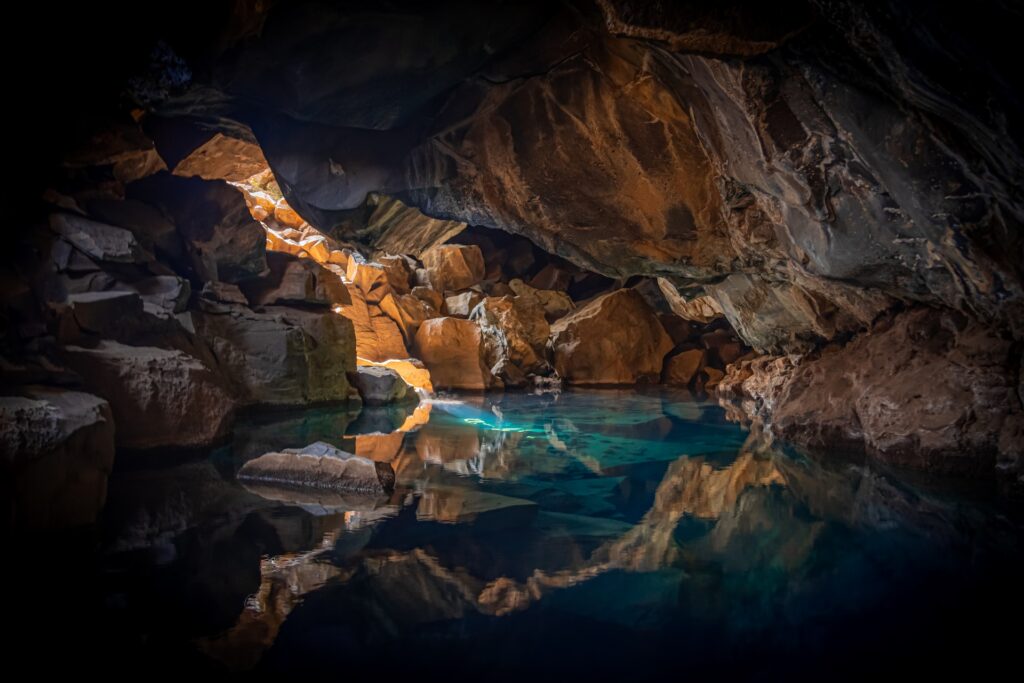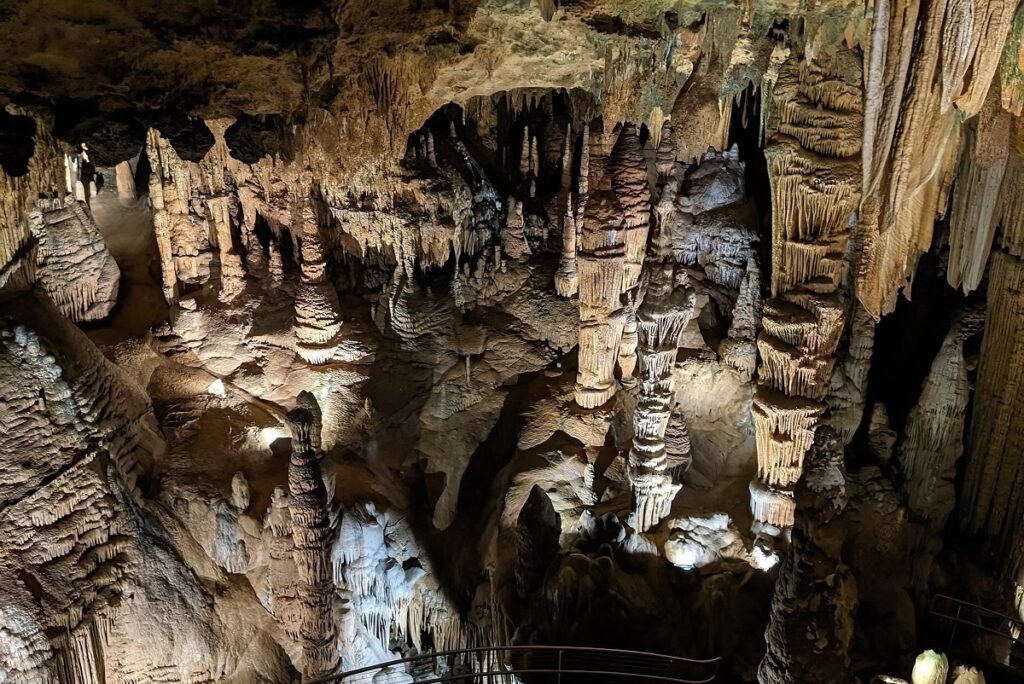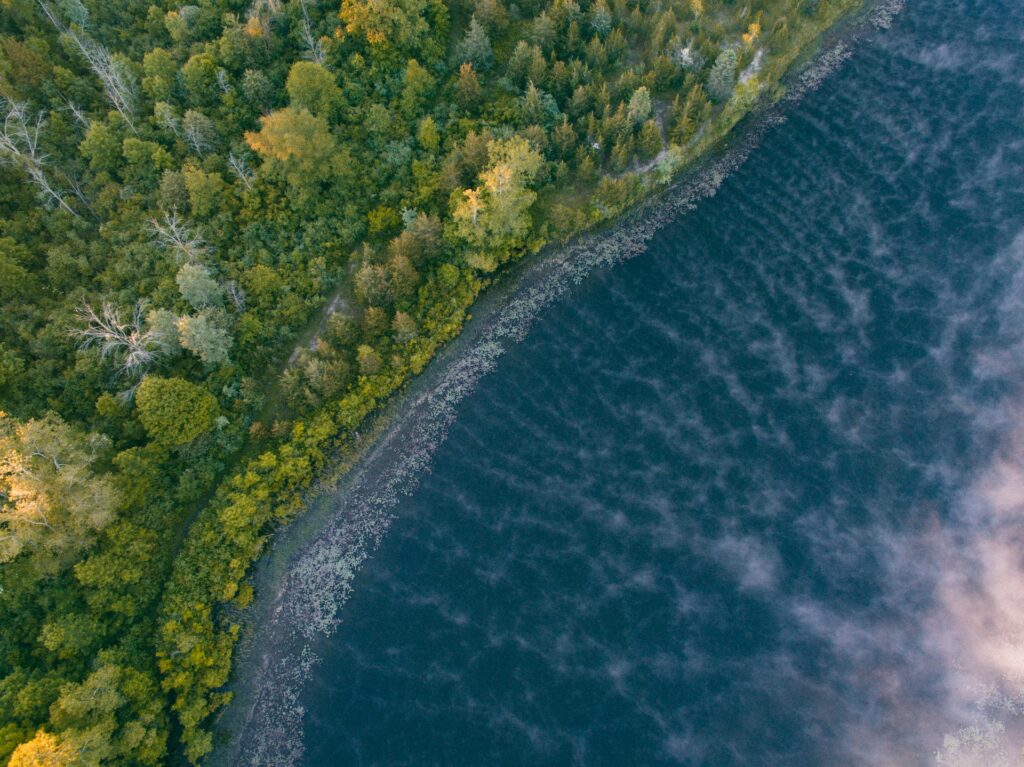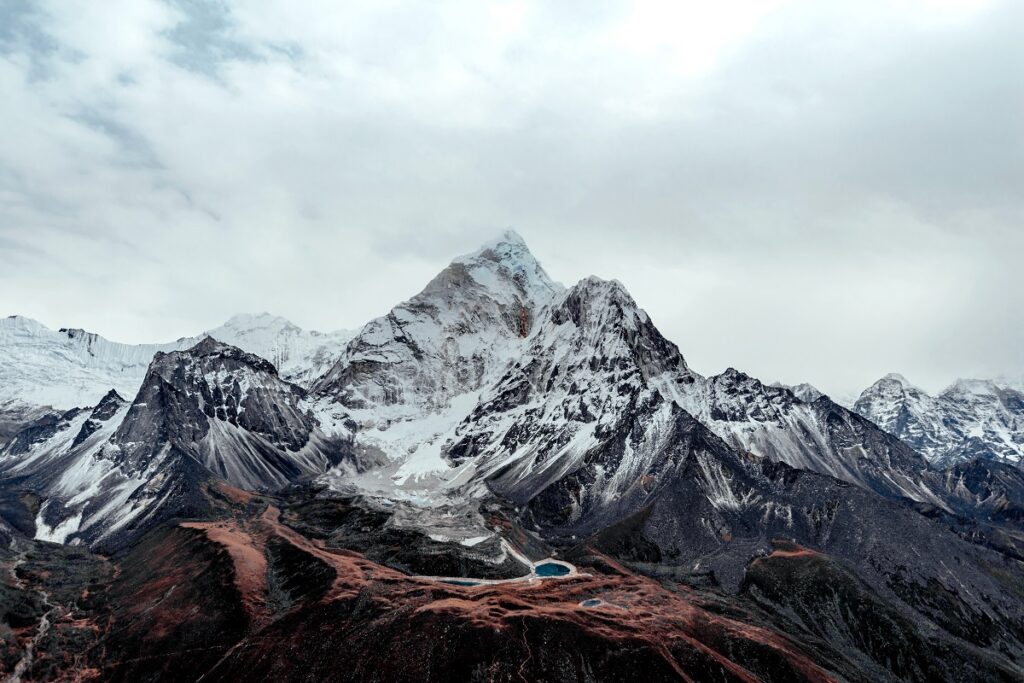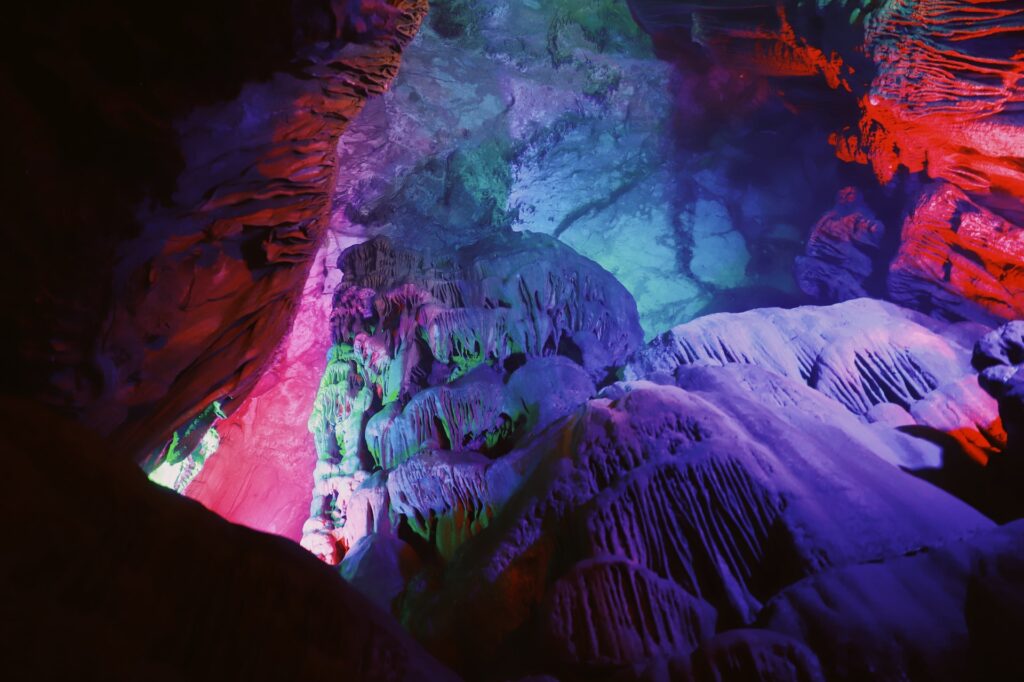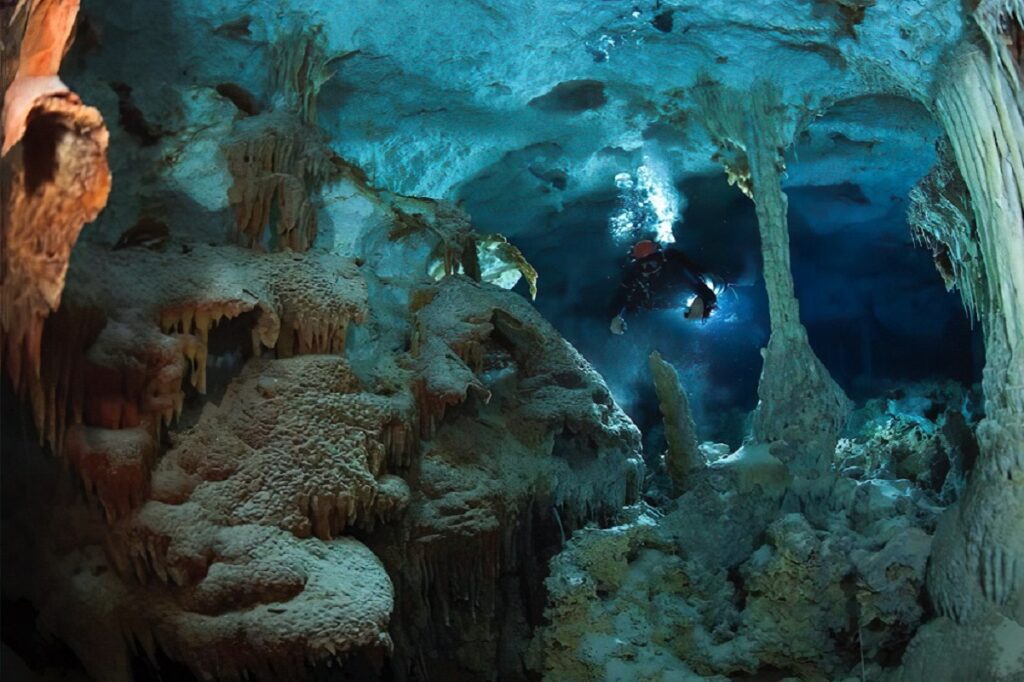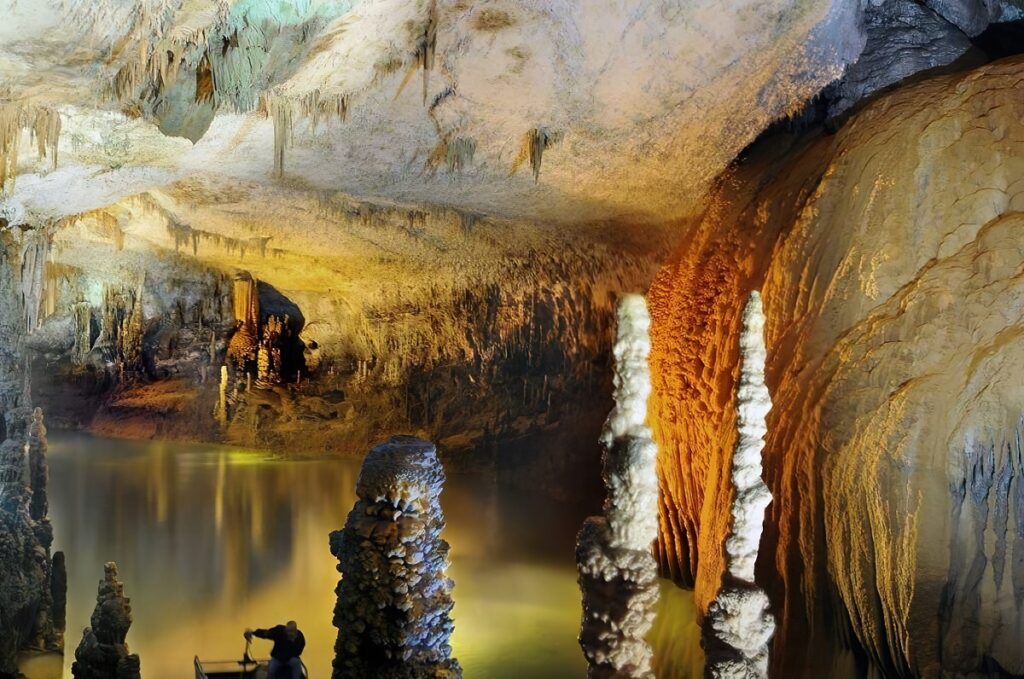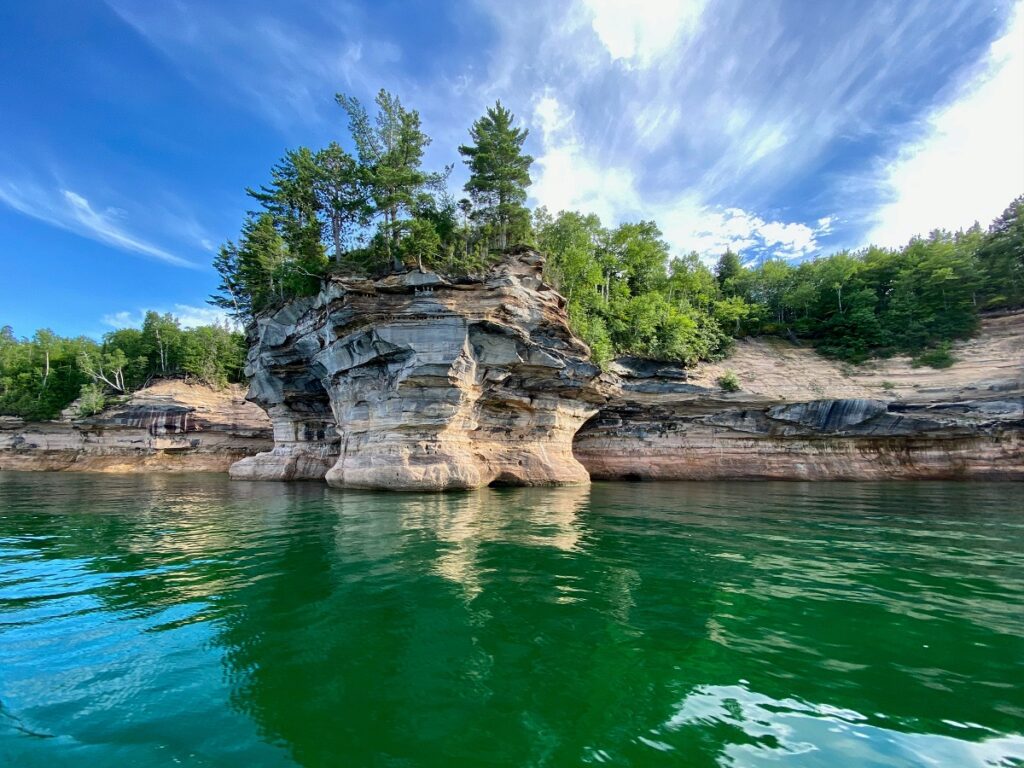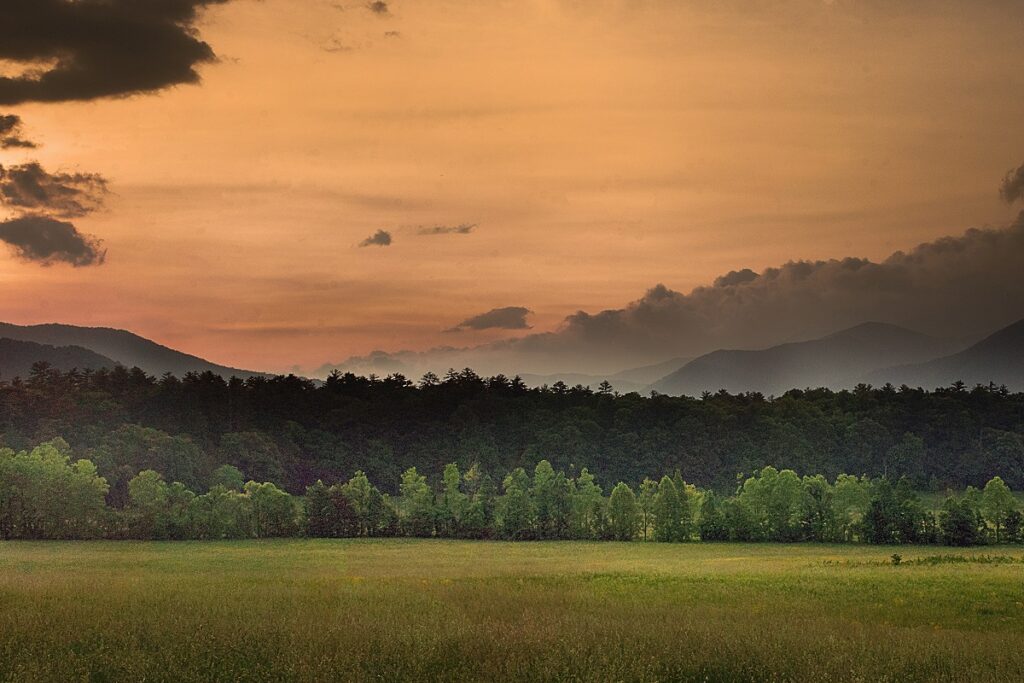Top 10 Largest Caves in the United States
Top 10 Largest Caves in the United States
WhiteClouds builds 3D Raised Relief Maps
In the vastness of America’s landscape, we find not only sweeping plains and towering peaks, but also a network of natural marvels hidden beneath our feet. Journey with us now as we explore the top 10 largest caves in the United States, each one confirming the country’s geographical diversity and the enduring curiosity of its people.
#1: Mammoth Cave, Kentucky (426 Miles)
Welcome to Mammoth Cave in Kentucky, the world’s longest known cave system, brimming with 426 miles of surveyed passageways that twist and turn into the depths of the Earth.
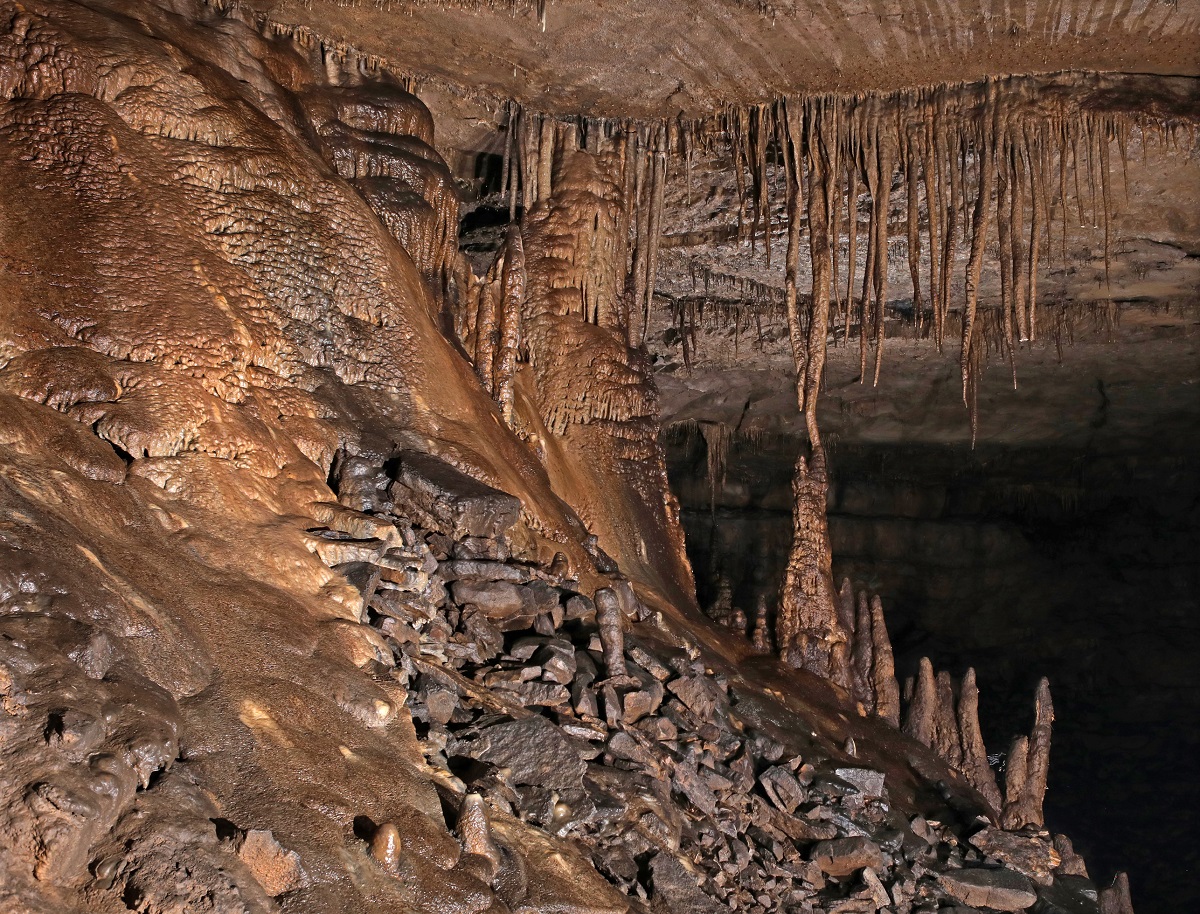
Named for its colossal size, Mammoth Cave was discovered in 1798 and has since drawn millions of visitors from every corner of the globe. This subterranean marvel is an intricate network of vast chambers, tight crawlways, eerie underground rivers, and cathedral-like rooms that echo with silence. Its treasures include the fascinating Gothic Avenue, a tunnel adorned with signatures from 19th-century explorers, forever imprinted on the cave walls.
The cave’s geological tapestry unfolds as you descend, revealing layers of limestone and sandstone strata, shaped over hundreds of thousands of years. It’s an active geological wonder, with stalactites and stalagmites still growing, and deep pools of water that ripple with echoes of the cave’s story.
Yet, the most thrilling aspect of Mammoth Cave may be the sense of exploration it inspires. The cave’s sheer enormity ensures that each visit offers something new and unseen. As you wander through its many passages, you become an explorer, navigating an alien landscape shrouded in mystery and excitement. Here, in the cool, dimly lit corridors, the thrill of discovery comes alive.
#2: Jewel Cave, South Dakota (217 Miles)
There’s a reason why Jewel Cave in South Dakota is named as such. Hidden beneath the Black Hills lies the third longest cave in the world, a 217-mile labyrinth shimmering with natural treasures that rival the most magnificent gemstones.
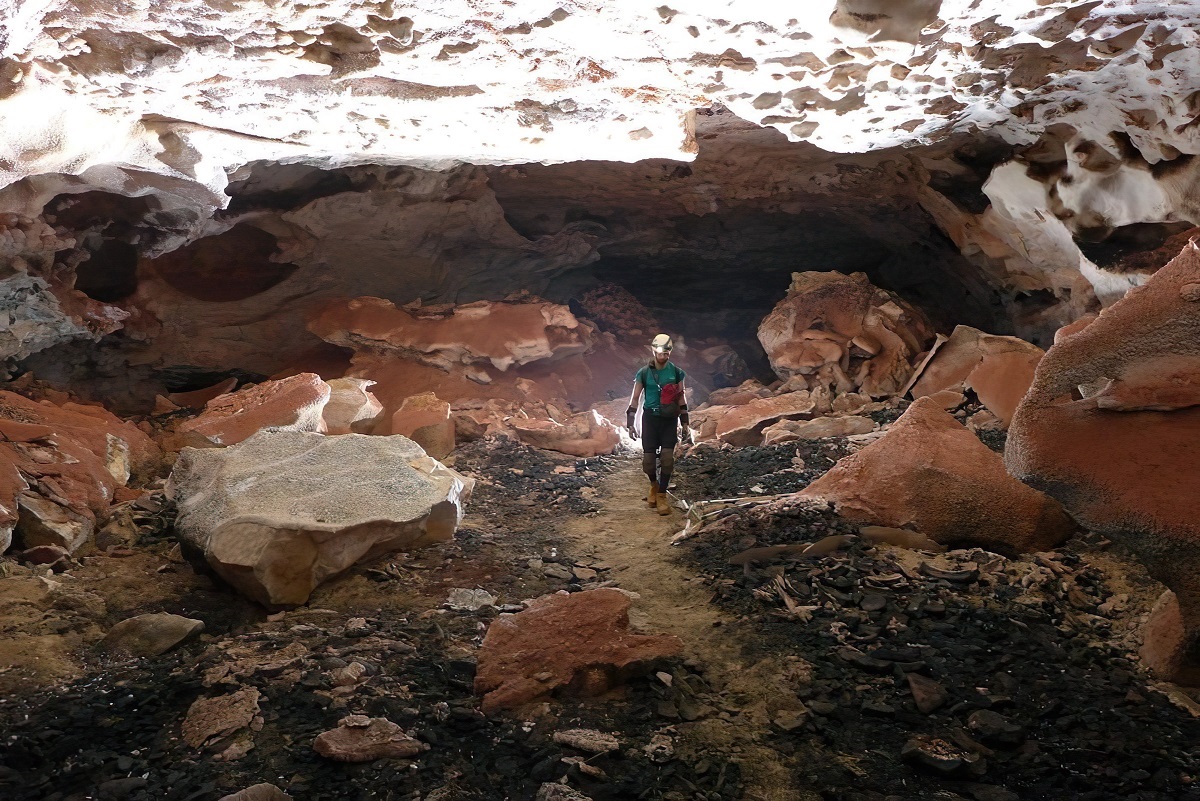
Discovered in 1900, Jewel Cave is a subterranean kingdom festooned with calcite crystals that refract the faintest light into a spectacle of gleaming, jewel-like formations. Imagine walking through an underground palace with walls lined with an array of glimmering sapphires, emeralds, and diamonds, creating an ethereal atmosphere that leaves you awestruck.
In the heart of Jewel Cave resides the captivating Big Drape Room. Here, draperies of flowstone cascade from the ceiling, resembling the folds of a grand curtain in a natural theatre of stone. Each formation tells a silent tale of the Earth’s history, echoing the countless millennia it took for water and minerals to create such captivating wonders.
What makes Jewel Cave truly special is its spirit of discovery. With only a fraction of its passages fully explored, stepping into the cave feels like stepping into the unknown. Each twist and turn reveals a new formation, a new spectacle that unfolds in the glinting light of your headlamp.
Annually, around 100,000 adventurers venture into this sparkling marvel, coming face to face with an underground world that redefines beauty. Whether they’re experienced spelunkers or first-time visitors, Jewel Cave offers a tantalizing taste of the subterranean splendors that exist beneath our world.
Jewel Cave is not just a destination; it’s a journey into the heart of the Earth, a dance of light and stone that captivates the soul and kindles the spirit of exploration. It’s a natural wonder that shines with an alluring beauty all its own, waiting to be discovered.
#3: Wind Cave, South Dakota (162 Miles)
Deep beneath the prairies of South Dakota lies an enchanting realm of stone and air, where the earth ‘breathes’ and intricate formations carve tales of time in calcite and limestone. Welcome to Wind Cave, a stunning underground world renowned for its unique geological features and intriguing mythology.
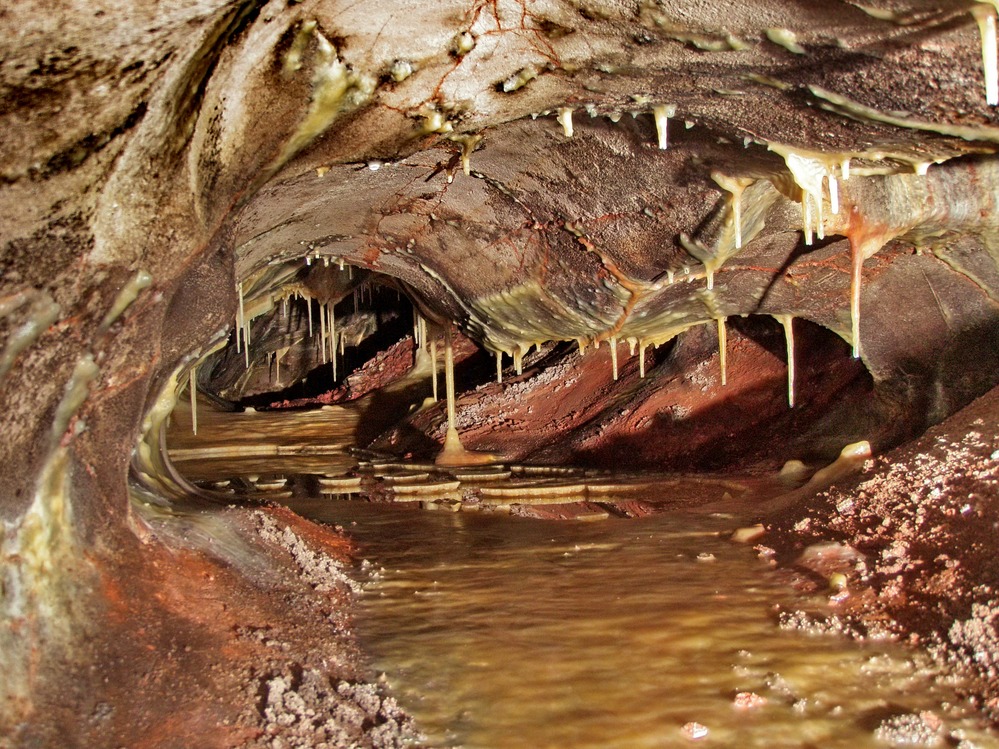
This 162-mile-long cave, discovered by the Bingham brothers in 1881, is named for the barometric winds at its entrance, a phenomenon that gave rise to stories of the cave ‘breathing’. As you descend into the subterranean depths, you can feel the whisper of the cave’s breath against your skin, a subtle reminder of the living nature of our planet.
Wind Cave is a geologist’s playground, home to a labyrinth of passages adorned with the world’s most extensive display of boxwork formations. This intricate network of thin calcite fins creates a honeycomb effect on the cave’s ceilings and walls, resembling delicate lacework crafted by Mother Nature herself. Also found here are ‘frostwork’ formations, needle-like growths that add a touch of winter’s charm to the cave’s interior.
Each visit to Wind Cave is an invitation to explore, a journey into a landscape sculpted by the passage of time and the persistence of water. Wandering through its complex maze, one can’t help but feel a sense of awe for the geological wonders that lie beneath our feet.
Wind Cave is more than just an impressive collection of caverns and passages. It’s a portal into our planet’s past, where each rock formation is a page in the history of Earth. The cave offers an unforgettable adventure that leaves explorers with a profound appreciation for the complexities and grandeur of our world. It’s an underground odyssey that leaves you winded in wonder.
#4: Lechuguilla Cave, New Mexico (150 Miles)
Tucked away within the rugged wilderness of New Mexico’s Carlsbad Caverns National Park, Lechuguilla Cave is an untouched wonder, a subterranean Eden that teems with otherworldly formations and tantalizing mysteries. As the deepest limestone cave in the United States and the seventh-longest cave globally, Lechuguilla is a testament to nature’s sculpting prowess and a sanctuary for rare cave phenomena.
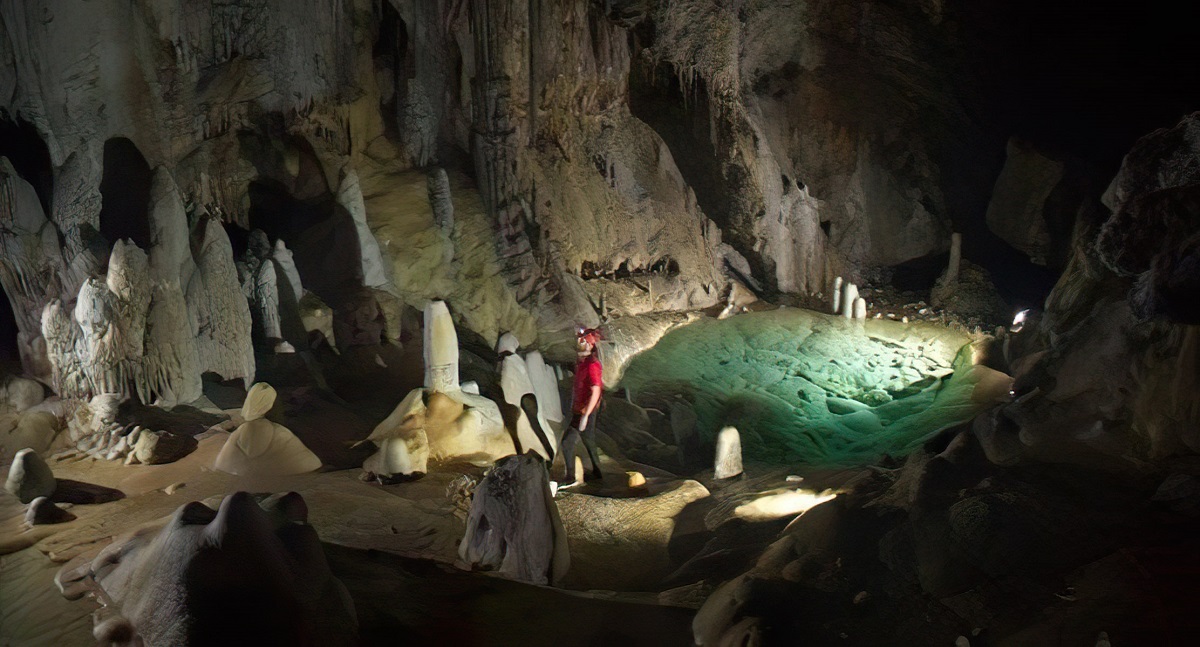
This remarkable cave was relatively unknown until 1986 when cavers felt a strong, cool breeze emanating from its depths. Today, with more than 138 miles of passages mapped, Lechuguilla remains a font of thrilling exploration and scientific discovery. The cave’s extraordinary features include its pristine gypsum and sulfur formations, glistening chandeliers, and the rare, delicate helictites that curl like strands of tangled hair.
Lechuguilla is home to the Chandelier Ballroom, a mesmerizing spectacle of countless gypsum chandeliers, some up to 20 feet long, dangling from the ceiling. This ethereal scene echoes a grand ballroom frozen in time, suspended in silence, making it a sight that leaves explorers awe-struck.
Yet, what sets Lechuguilla apart is its secretive nature. It is a research cave, with access granted primarily to scientists and researchers. This exclusivity has preserved Lechuguilla’s pristine condition, making it a valuable resource for studying cave ecosystems, geology, and the evolution of unique mineral formations.
Lechuguilla Cave is more than just an underground wonder; it’s an irreplaceable treasure chest of geological and biological marvels, a haven of quiet beauty, and a museum of natural history. Its passages are chapters of Earth’s narrative, a storytelling tableau written in stone and silence, awaiting decipherment by the light of an explorer’s torch. In the heart of Lechuguilla, the very essence of adventure unfolds, showcasing the spectacular depths of our remarkable planet.
#6: Friars Hole Cave System, West Virginia (51 Miles)
Nestled deep in the picturesque Greenbrier County of West Virginia, the Friars Hole Cave System stands as a geological testament to the wonders hidden beneath our feet. Boasting over 44 miles of mapped passageways, Friars Hole is the longest cave system in the state and among the longest in the United States.
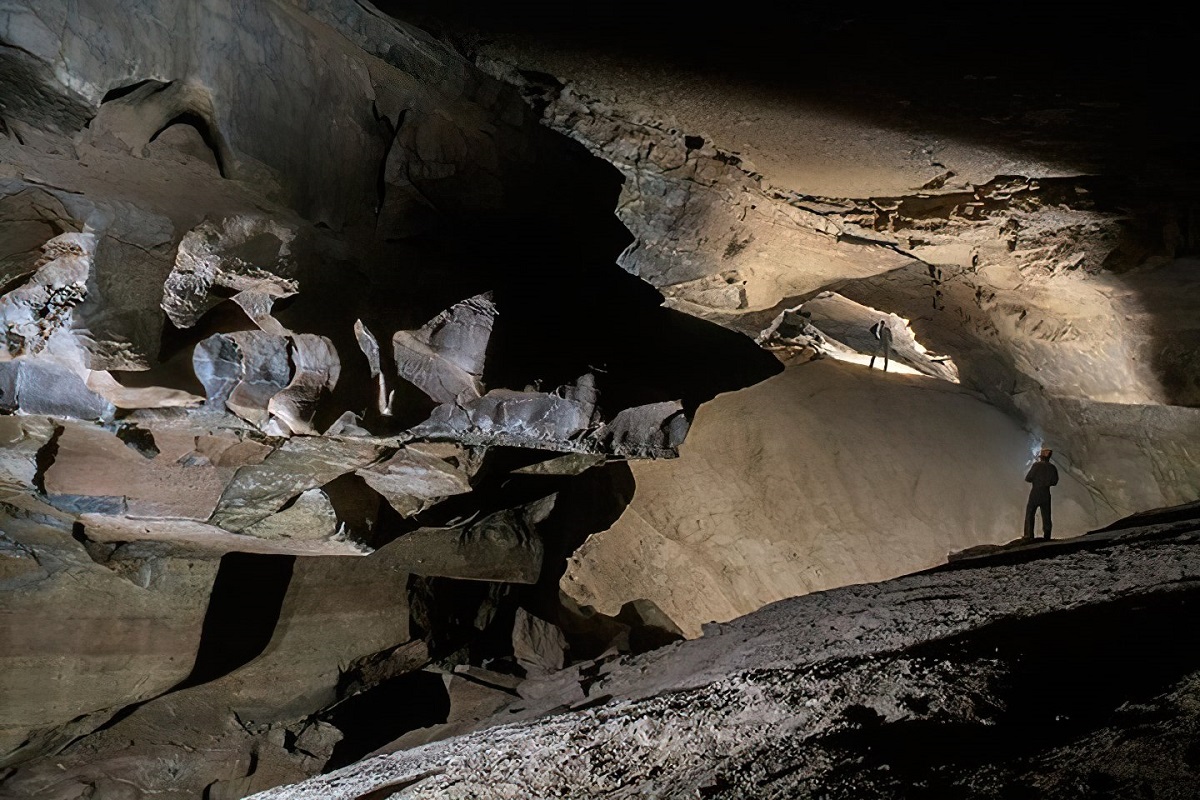
The thrill of exploration begins the moment you descend into the darkness of Friars Hole. The subtle play of light and shadow on the intricate formations of stalactites and stalagmites lends the cave an otherworldly aura, stirring a sense of awe and respect for the forces that have shaped this subterranean masterpiece over millions of years.
Journey deeper, and you’ll encounter the cave’s most unique feature – the Culverson Creek. This subterranean river courses through the heart of the cave system, its cool, clear waters echoing through the limestone corridors and providing a lifeline for the cave’s unique, adapted ecosystem. The river’s flow carves and shapes the caverns, a slow yet relentless artist creating an ever-changing sculpture of rock and water.
Friars Hole isn’t just an underground wonderland; it’s also a living laboratory. Its depths offer an invaluable resource for scientists, its untouched ecosystems and geological structures providing clues to our planet’s ancient past and insights into its future.
But perhaps what makes Friars Hole most special is its spirit of adventure. It has been a magnet for cavers for decades, drawing brave souls eager to uncover its hidden chambers and navigate its winding passageways. Each expedition brings new discoveries, as this vast underground labyrinth continues to reveal its secrets.
Whether you’re an experienced spelunker or simply someone with a love for the natural world’s marvels, Friars Hole Cave System offers a journey like no other. As you traverse its echoing chambers and follow its silent river, you’ll discover not just the wonders of the underground, but also the thrill of exploration and the boundless beauty of our planet.
#7: Binkleys Cave System, Indiana (45 Miles)
Tucked away in the verdant landscape of southern Indiana, the Binkley’s Cave System is an underground marvel that resonates with the timeless allure of discovery. Extending for more than 45 miles, Binkley’s Cave is the longest cave in Indiana and ranks among the longest cave systems in the United States.
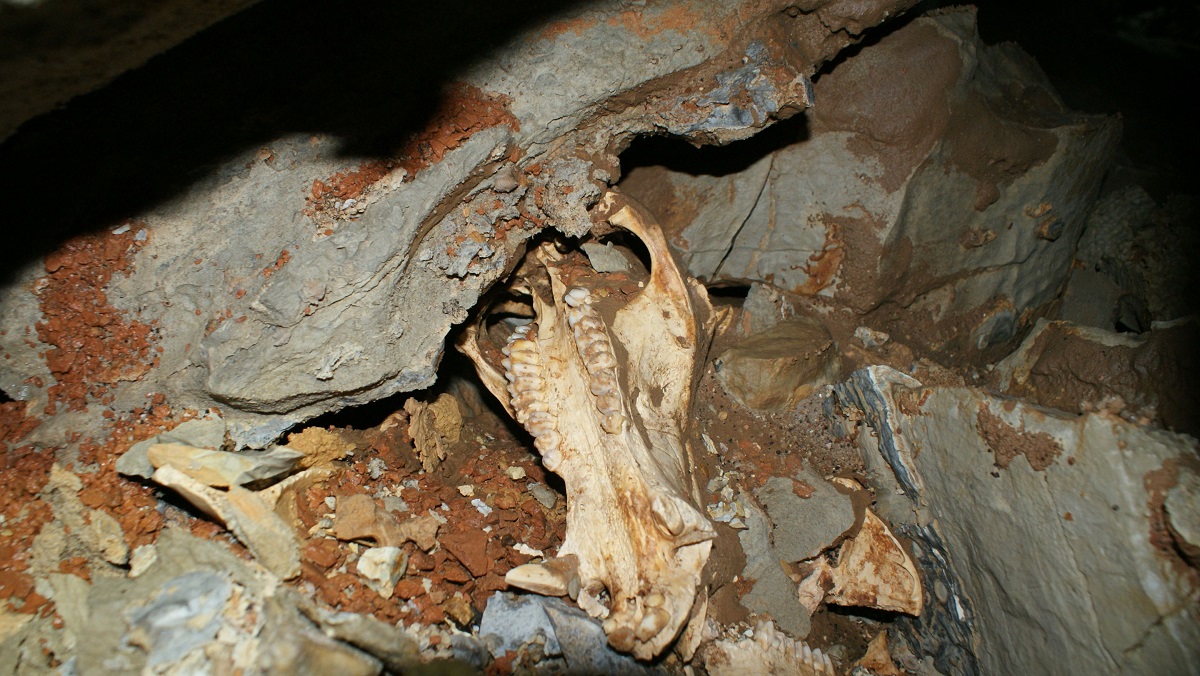
Binkley’s Cave System invites exploration, a mesmerizing realm beneath the surface where natural history unfurls in a grand geological tableau. Stalagmites and stalactites punctuate the limestone corridors, creating an otherworldly landscape shaped over millions of years. As you venture deeper into the cave, you might encounter the underground streams and pools that contribute to this ever-evolving subterranean spectacle.
The discovery of Binkley’s Cave in 1952 was a defining moment in the annals of American speleology. But it was the renewed exploration efforts in the late 1980s and beyond that unveiled its true magnitude. The labyrinthine complexity of Binkley’s offered an irresistible challenge for cavers, resulting in the discovery of numerous previously unknown passages, chambers, and even rare cave-dwelling species. These revelations underscored Binkley’s reputation as an explorer’s paradise, a trove of uncharted territories hidden beneath the surface.
Binkley’s Cave is also a vibrant ecological microcosm, home to fascinating species adapted to the cave’s unique environment. These organisms provide valuable insights into evolutionary biology and adaptation strategies, rendering the cave a live natural laboratory.
Navigating through the passages of Binkley’s Cave, you are immediately captivated by its quiet grandeur and the allure of its hidden depths. Whether it’s the thrill of exploration, the fascinating geological formations, or the unique biodiversity, Binkley’s Cave offers an extraordinary journey into the subterranean realms, echoing with the mysteries and wonders of the natural world.
#8: Fort Stanton Cave, New Mexico (45 Miles)
Venture beneath the rugged landscapes of New Mexico, and you’ll discover a world sculpted by time and water, a realm of endless wonder and profound beauty. Welcome to Fort Stanton Cave, an extraordinary subterranean marvel that stretches over 50 miles and features one of the world’s most impressive speleothems, the elusive helictite “Snowy River.”
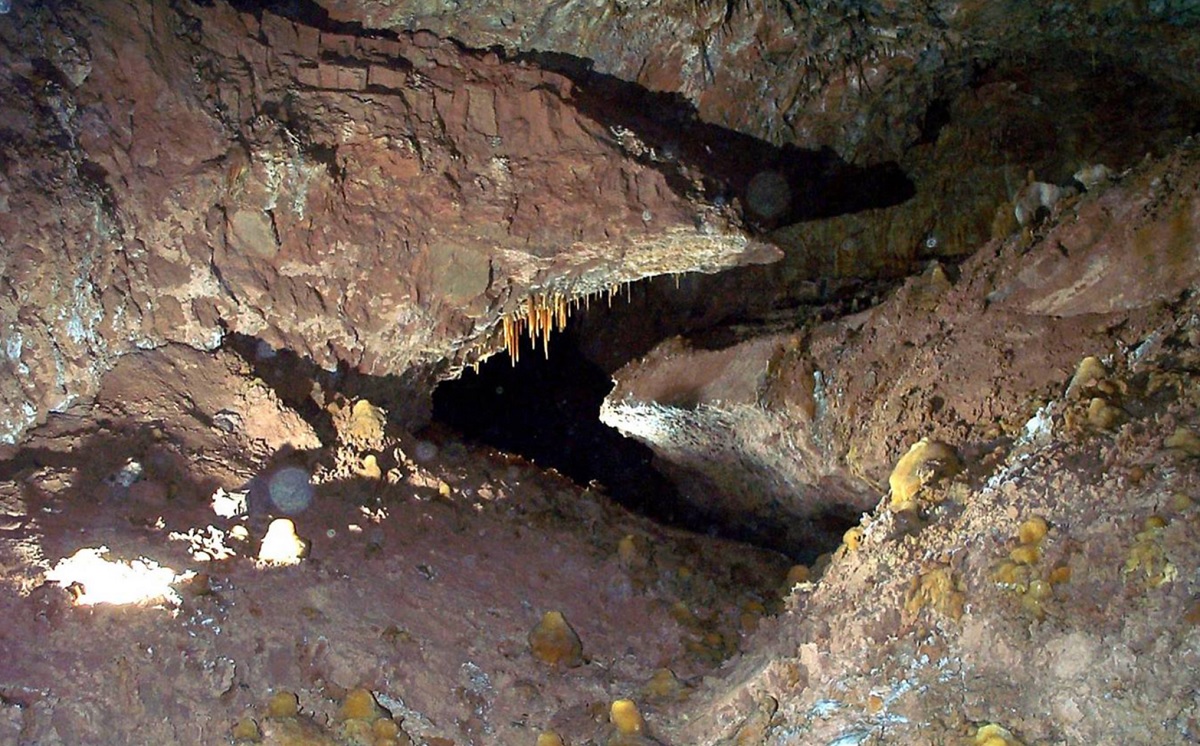
Fort Stanton Cave, discovered in 1855, boasts vast chambers, narrow tunnels, and complex networks of passages that delve deep beneath the earth’s surface. Its most famous feature is the “Snowy River,” a stunning calcium carbonate formation that resembles a frozen river, winding its way through the cave’s heart. Its unique beauty draws explorers and scientists from around the world, keen to unravel the mysteries of this dazzling spectacle.
As you navigate through Fort Stanton’s sprawling network, you’ll be met with a spectacular display of geological artistry. Stalactites drape from the cave ceiling like intricate chandeliers, while stalagmites rise from the cave floor, standing as timeless sentinels in this underground kingdom.
The cave also serves as a sanctuary for various wildlife, including the endangered cave dwelling bat, and a range of unique cave-adapted invertebrates, adding an ecological dimension to its geological significance.
Fort Stanton Cave is not just an adventurous exploration; it’s a journey into Earth’s past, a silent storyteller of our planet’s natural history. Each venture into its depths offers a front-row seat to nature’s grand spectacle, where stone comes alive, and a whisper of discovery echoes through the cool, subterranean air.
Beneath the New Mexican desert, Fort Stanton Cave continues to enthral, surprise and fascinate. It’s a testament to the Earth’s creative might, a secret world of beauty and wonder that stands as one of the most intriguing cave systems in the United States.
#9: Hellhole Cave, West Virginia (44 Miles)
In the rugged terrain of West Virginia’s Germany Valley, lies a geological treasure known as Hellhole, one of the most extensive cave systems in the United States. With an impressive 44 miles of surveyed passages, Hellhole serves as a gateway to an underworld filled with awe and mystique.
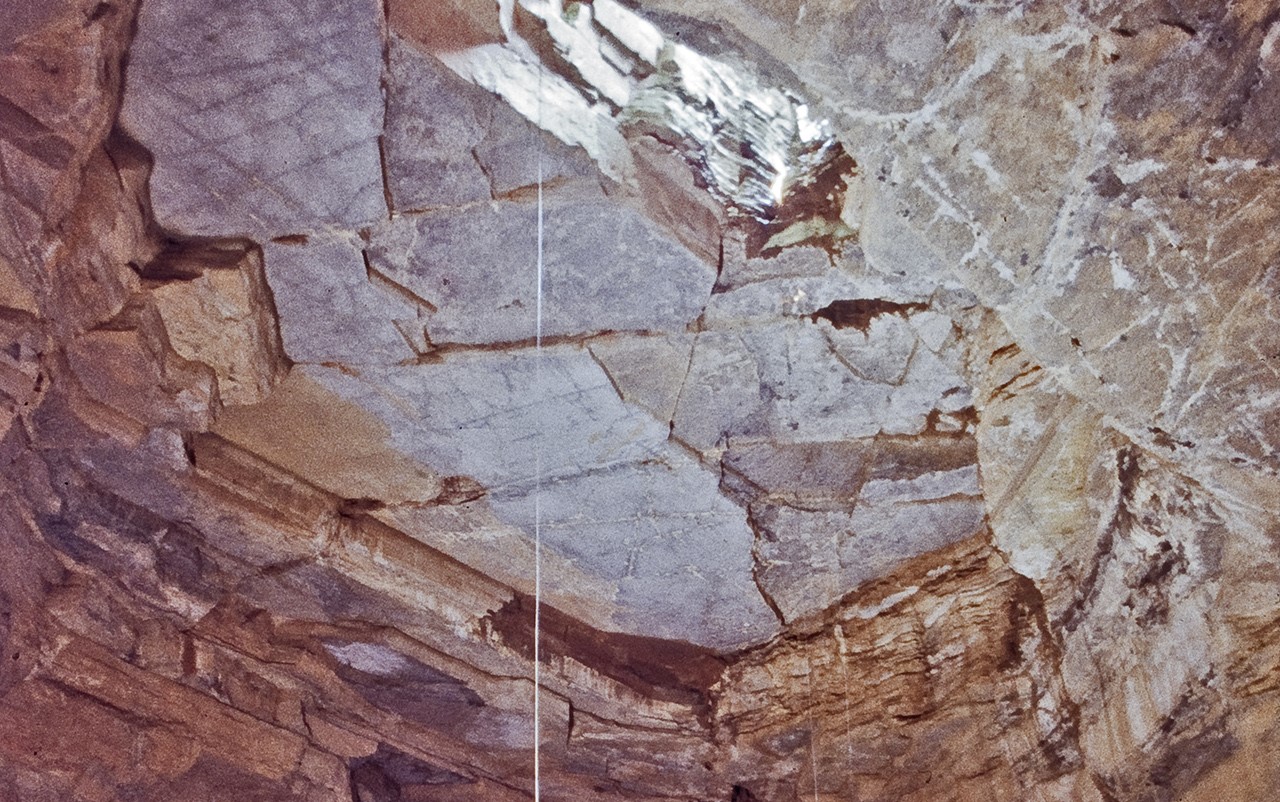
Descend into the yawning mouth of Hellhole, and you’ll find yourself immersed in a labyrinthine world of staggering complexity. Giant halls decked with natural sculptures of calcite, stalagmites, and stalactites, crafted over millennia, give the cave an almost cathedral-like ambience, lending an air of sacred silence broken only by the echoes of dripping water.
The cave’s intriguing name was inspired by the warmth and humidity that arise from its deep recesses, particularly noticeable during the colder months. Yet, it’s this very warmth that fosters an abundance of life forms within its depths, including the largest population of Virginia Big-Eared Bats, a federally endangered species.
For scientists and biologists, Hellhole presents a unique environment to study the adaptive strategies of life in total darkness. It’s also a geological paradise with a wealth of information about the earth’s past and present. Its speleothems, the cave’s decorative rock formations, serve as unique records of climatic changes and provide insights into karst processes.
Adventure runs deep in Hellhole. It has long been a hotspot for cavers and spelunkers, drawn by its twisting passages, massive chambers, and sheer complexity. Each expedition holds the promise of new discoveries, making Hellhole a vibrant symbol of exploration and scientific curiosity.
Hellhole Cave stands as a monument to nature’s artistry, a geological wonderland filled with breathtaking formations, unique biodiversity, and untold mysteries. It’s a place that reminds us of our innate desire to explore, to understand, and to marvel at the wonders of the world beneath our feet.
#10: Kazumura Cave, Hawaii (41 Miles)
Among the diverse array of geological wonders that populate our planet, the Kazumura Cave holds a distinct charm. Located on the Big Island of Hawaii, it stands as the world’s longest and deepest lava tube, stretching an astounding 41 miles and delving approximately 3,614 feet below ground. It’s a testament to the earth’s fiery forces, a spectacular monument forged by the powerful Kilauea volcano.
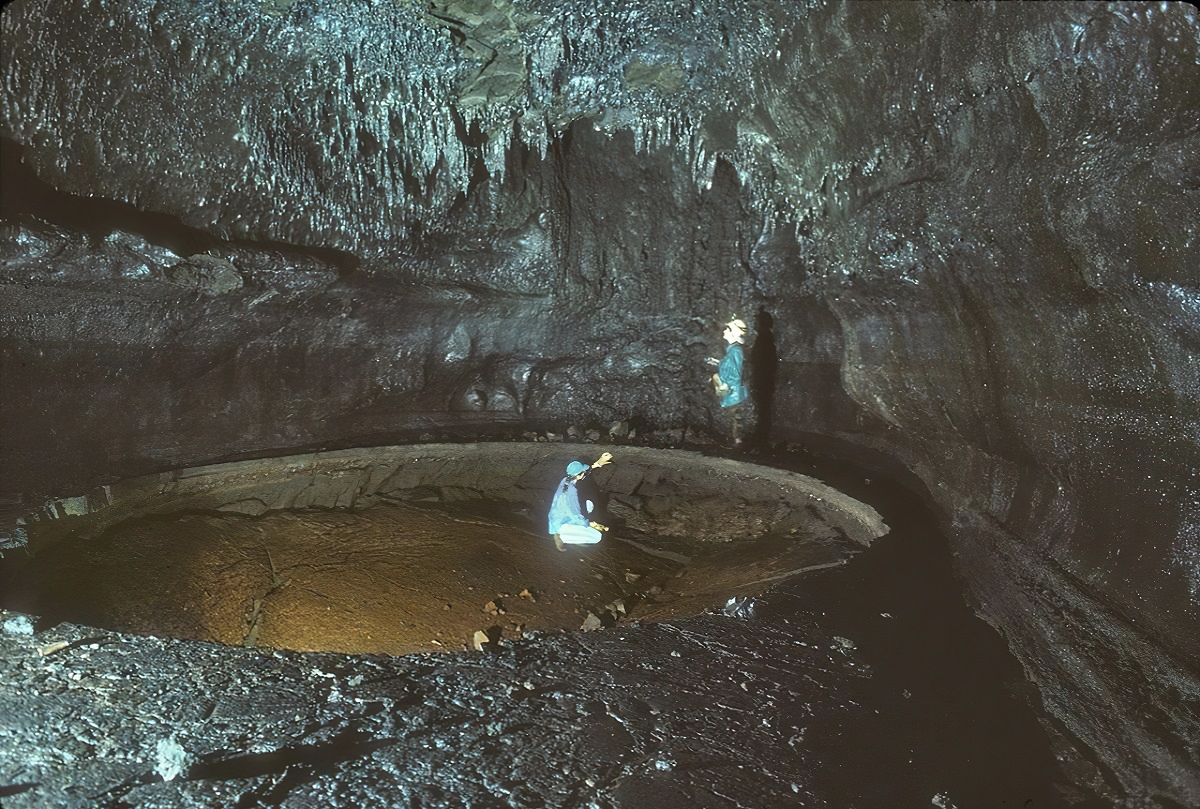
Unveiled from the solidified flows of molten lava, Kazumura Cave is a journey into Earth’s core. Its blackened walls, shaped by time and lava, narrate a story of our planet’s potent dynamism. The sense of awe begins at the cave entrance, where sunlight merges with darkness, beckoning adventurers into a realm sculpted by fire.
Each exploration of Kazumura is an odyssey through time. The cave’s stark beauty, revealed through a myriad of lava formations, from stalactites dripping from the ceiling to cascades of hardened lava frozen in motion, creates an alien landscape that astounds the senses. Side passages branch off in labyrinthine complexity, leading explorers into the heart of this subterranean marvel.
The cave’s ecology is as fascinating as its geology. The pitch-black environment houses endemic species such as the remarkable ‘blind’ cave cricket and the swiftlet bird that navigates in complete darkness using echolocation, a testament to nature’s adaptability.
The enchanting story of Kazumura Cave comes to life in its legendary lava falls, towering lava columns, and the rhythmic drip of water seeping through its ceiling. As visitors venture deeper, they become part of a narrative written over 350,000 years ago by the primal forces of Earth.
Kazumura Cave encapsulates the profound power and allure of nature, a subterranean spectacle etched by lava, and an awe-inspiring testament to our planet’s fiery history. To delve into its depths is to traverse the geological memory of our Earth, and emerge with an enduring sense of wonder.
More Great Top 10’s
Caves and Maps
A glimpse into the deep recesses of the earth, caves present a fascinating blend of history, geology, and biodiversity, making them intriguing subjects for exploration and study. Yet, this subterranean world can be perilous, filled with a labyrinth of passages, some of which stretch for miles. Understanding the spatial intricacies of caves is paramount for safe and successful exploration. Here is where maps come into play. The relationship between caves and maps is as profound as it is practical, offering a unique intersection of science, exploration, and cartography.
Mapping caves, or speleology, is a critical aspect of caving. It aids researchers and explorers in understanding the complex networks below the earth’s surface, helps guide rescue operations, informs conservation efforts, and contributes to our knowledge of earth’s history.
In essence, the relationship between caves and maps is an intricate dance between exploration and understanding. Cave maps not only guide us safely through the earth’s subterranean labyrinths but also help us understand these mysterious structures better, aiding scientific research, contributing to effective conservation, and enhancing the thrill of exploration.
Learn more about Maps
- Topographical Maps: Representation of the physical features of a region or area.
- Contour Maps: Representation of the contours of the land surface or ocean floor.
- Raised Relief Maps: Representation of land elevations with raised features indicating landforms.
- Terrain Maps: Representation of the physical features of a terrain or landmass.
- USGS Topographic Maps: Representation of topographic features and land elevations based on USGS data.
- USGS Historical Topographic Maps: Representation of historical topographic maps created by the USGS.
- Watershed Maps: Representation of the areas where water flows into a particular river or lake.
- Elevation Maps: Representation of land and water elevations with high precision.
- Physical Maps: Representation of physical features of the Earth’s surface such as landforms, oceans, and plateaus.
- Bathymetric Maps: Representation of the topography and features of the ocean floor.
- NOAA Maps: Representation of atmospheric, oceanographic, and environmental data by NOAA.
- Nautical Maps: Representation of the underwater features and depth of an area for navigation purposes.
- Geologic Maps: Representation of the geologic features of an area such as rock types, faults, and folds.
- Satellite Maps: Representation of earth from high-definition satellite imagery.
Contact us today to learn more about our services and how we can help you achieve your goals.
